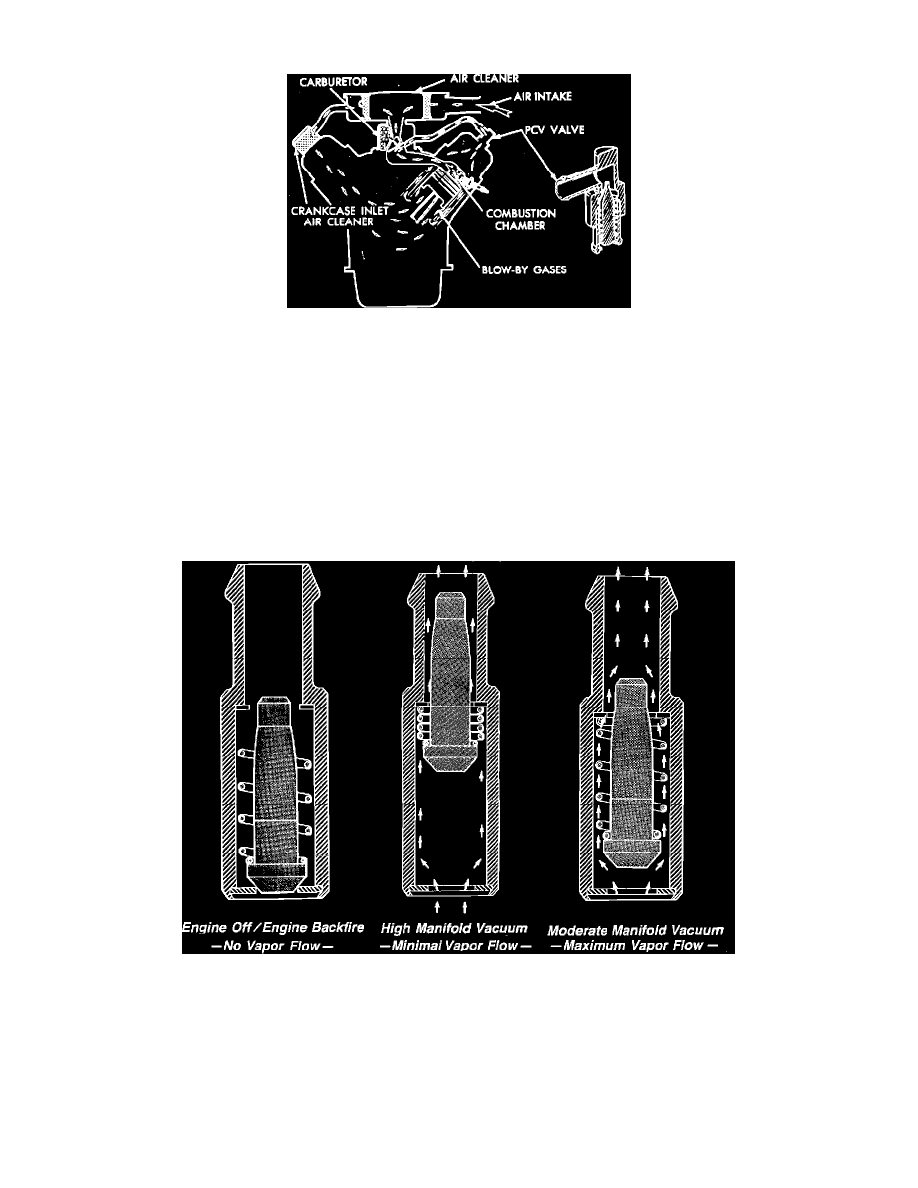2500 4x4 Pickup V8-5.2L CNG VIN T (1996)

Positive Crankcase Ventilation: Description and Operation
Typical Positive Crankcase Ventilation System
PURPOSE
The purpose of the PCV system is to reduce hydrocarbon (HC) and carbon monoxide (CO) emissions created by engine blow-by. Also the PCV
system is used to prevent sludge build up in crankcase
CONSTRUCTION
This system is a closed crankcase ventilation system that consists of a PCV valve, a hose extending from the PCV valve to the intake plenum, a
crankcase inlet air filter, and a hose connected from the crankcase inlet air filter to the valve cover.
OPERATION
Crankcase vapors and piston blow-by are removed from the engine by manifold vacuum. These gases are drawn through the PCV hose and into the
intake plenum, they mix with the calibrated air/fuel mixture, and get burned and expelled with the exhaust gases.
PCV Operation
The amount of vapor drawn from the crankcase varies with intake manifold vacuum (engine load). When the engine is off or during intake
manifold backfire, a spring the valve plunger preventing vapor flow. Under high intake manifold vacuum conditions (idle, and deceleration), the
valve plunger allows minimal vapor flow. During moderate intake manifold vacuum conditions (cruise, light load), the valve plunger allows
maximum vapor flow.
